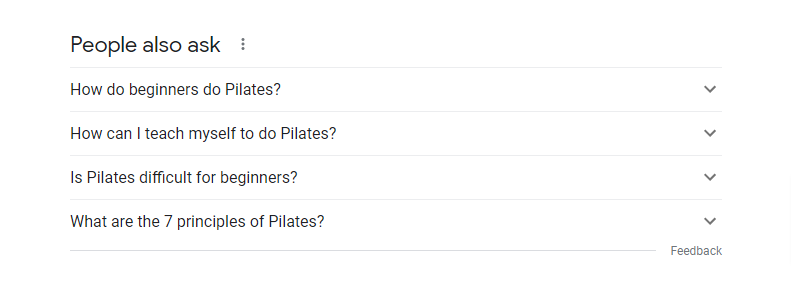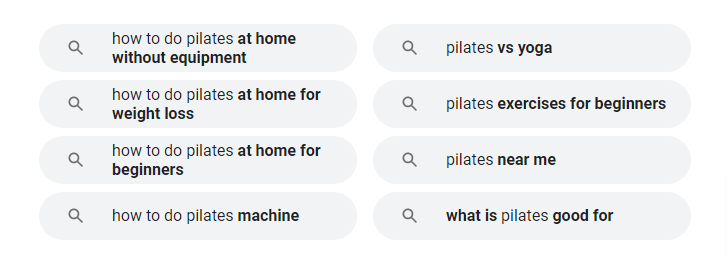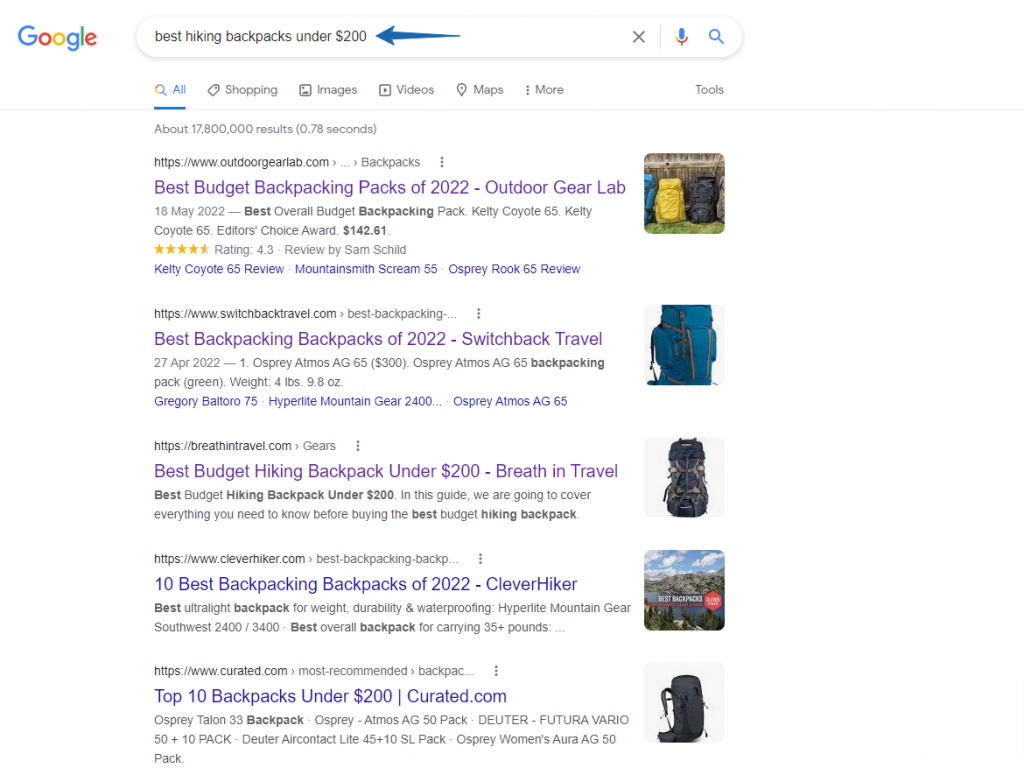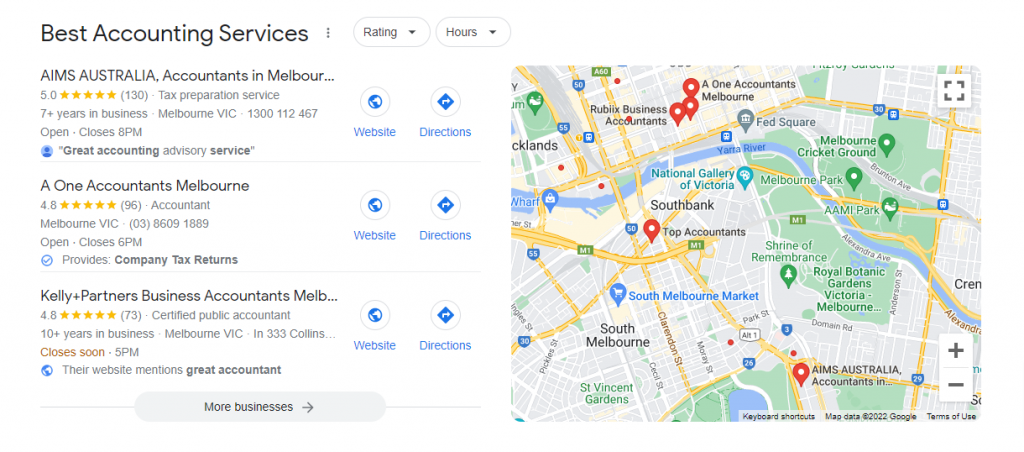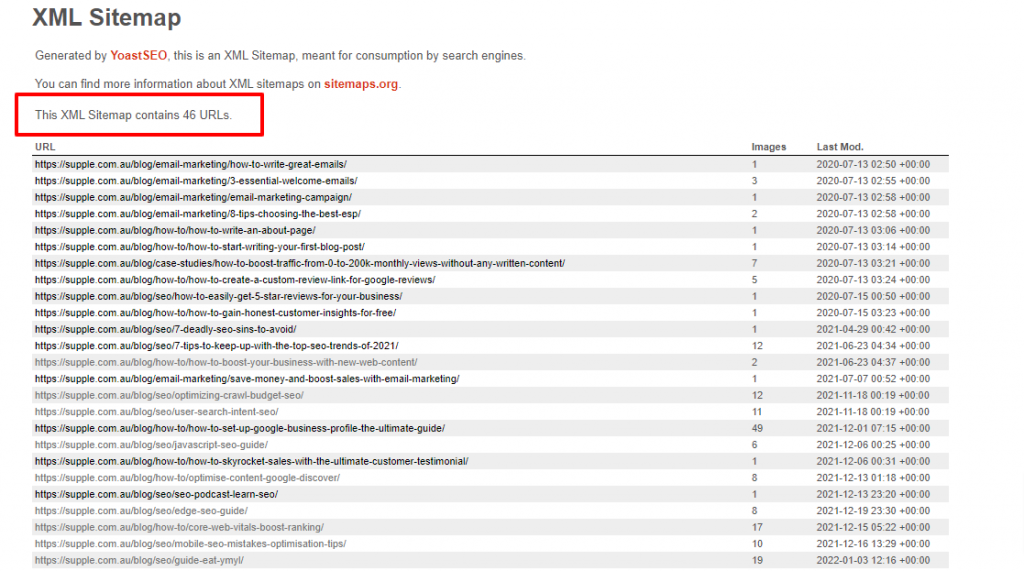How to Outrank your Competitors on Google with SEO?
Tired of seeing your competitors ranking on top of the search results?
Let’s face it. It’s hard to rank on the first page of Google. And even harder when your competitors rank but you don’t.
But here’s the good news!
If your competitors are ranking on the first page, it means there’s a way to do that. It’s just that you haven’t figured it out yet.
And hopefully, now you’re going to crack the SEO code.
In this detailed guide, we’ve summed up our years of experience as a leading SEO agency, to help you rank higher on Google and outrank your competitors on Google.
Here are the steps you need to follow.
1. Conduct Keyword Research
To rank on Google, first, you need to know what people are searching for. That’s why you need to conduct thorough keyword research since it’s the first and foundational step in creating a high-performing content and SEO strategy.
Let’s look at the basics of keyword research.
1.1 Identify the Right Target Keywords
The whole idea behind ranking your site on Google is to get search traffic from there. Now, people don’t search Google to discover your brand.
They search Google to find solutions to their problems. That’s why you need to dive into what exactly they’re looking for — search terms or keywords. And then create content around these identified keywords.
Here are the factors to identify the right keywords for your business:
- Search volume: Typically, the higher the search volume the better. It means that a lot of people are searching for that keyword. So if you manage to rank for such keywords, you can get good traffic. However, high search volume keywords may also have high competition.
- Keyword difficulty: As mentioned above, high volume and high competition usually go hand-in-hand. Hence, look for keywords with moderate volume and low competition. These are low-hanging fruits. You can rank for them easily as compared to highly competitive keywords.
- Business potential: Ranking for a keyword and getting traffic will only make sense if that can bring you business eventually. Hence, the keywords you choose should be relevant to the products or services you offer so that you can feature them naturally within your content.
You can use SEO tools like Ahrefs or Semrush for keyword research.
1.2 Analyse Searcher’s Intent
Search intent is the primary reason why a user initiates a Google search. Typically, users’ search queries fall into the below search intent categories:
- Informational: The searcher is looking for information. And their queries mostly start with questions like what, why, how, etc.
- Navigational: User already knows where they want to go and usually searches for the brand name.
- Commercial investigation: In this case, the user may want to compare different options, read reviews, etc.
- Transactional: Here, the searcher already knows what they want to buy. And their search queries can look like “buy airpods”, “buy nike jordan”, etc.
For instance, the keyword “surfing for beginners” has informational intent. And if you check all the organic results on the first page, they include tutorial videos, tips, listicles, and guides.
It’s all educational content. Google hasn’t ranked even a single product page selling the surfing boards or landing page promoting surfing courses in the top 10.
So if you want to rank your pages in Google, your content must be aligned with the user’s search intent.
1.3 Research “People Also Ask” and Related Searches
When you research keywords for your niche, also take a look at the additional suggestions in SERPs — People Also Ask (PAA) box and Related Searches.
For example, let’s search for the keyword “how to do pilates”.
Here are some more pilates-related queries that people search on Google.
PAA box:
Once you click the questions in the PAA box, Google will expand this list to recommend more such queries.
Related searches:
As you can see PAA and related searches are goldmines of relevant keywords and topic ideas.
2. Perform SEO Competitor Analysis
Ranking on the first page of Google search results is a gradual and organic process. Moreover, if you want to outrank competitors that are long-established and have a topical authority in the niche, you need a strategic approach.
You need to understand their content and SEO strategy by performing SEO competitor analysis. The idea is to learn about their strengths & weaknesses and capitalise on them.
We’d advise you to use a professional SEO tool or hire an external SEO agency to get you through this process.
That said, here are some key aspects of competitive analysis.
2.1 Find Keyword Gaps
There would be some common keywords that you and your competitors both target. By analysing keyword gaps, you’ll discover the keywords that your competitors target and rank for but you don’t.
Once you identify these keyword gaps, include them in your keyword list. And start creating quality content on these topics.
2.2 Analyse Top Content
Next, evaluate the top-performing pages of the competing websites. Here, top content means the pages that rank for various keywords, attract maximum traffic, get a lot of backlinks, etc.
So make a list of such pages and look at the following aspects:
- Content topics
- Content quality
- Content formatting/structure
- Content length
- Visuals and design, etc.
Once you study competitors’ top content, think of ways to deliver better value on similar topics through your content.
2.3 Study Backlink Profile
Backlinks are one of the top three ranking factors for Google. When high-authority sites link to your pages, it boosts your ranking.
That’s why you need to analyse your competitors’ backlink profiles and check:
- All the domains and webpages that link to them (competitors)
- The high-authority sites that link to them but not you
- Anchor texts to understand the context of linking — lead magnet, reading recommendation, etc.
- Broken backlinks on their sites, etc.
Once you have the above information, start reaching out to the high-authority sites that link to your competitors and pitch them to link to your content.
For broken backlinks, reach out to the linking domains and let them know that the page they’ve linked to doesn’t exist anymore. And offer them to replace the broken link with the relevant content on your site.
2.4 Evaluate Website User Experience and Design
Google keeps reiterating the importance of website user experience (UX) with every major update. And it’s no surprise that negative UX leads to high bounce rates and eventually results in dropped ranking and traffic.
Thus, it makes sense to inspect the website UX and design of the competitors that rank consistently.
Here’s what to look for:
- Site structure and navigation
- The design elements
- The visual appeal of the site
- Website speed and responsiveness
- Mobile-friendliness, etc.
Take note of factors that you found inspiring and want to integrate into your site.
3. Create Quality Content
You may have nailed keyword research and competitive analysis, but ultimately it boils down to the quality of your content. If your content is not relevant, contextual, and useful to your target audience, your chances of ranking are slim to none.
Therefore, keep the below tips in mind while creating content.
3.1 Solve your Audience’s Problem
To solve the readers’ problem, you have to understand it first — and well enough.
The first step is identifying the correct search intent that we’ve already covered in the “Keyword Research” section earlier.
Next is creating content that matches the identified search intent.
When you analyse the search intent for specific keywords, pay attention to the following:
- Content type: Check the currently ranking pages whether they’re blog posts, landing pages, videos, product pages, etc.
- Content format: Analyse the format of ranking content i.e. how-to posts, listicles, comparison posts, reviews, news articles, etc.
- Content angle: The content angle is the unique perspective or opinion that an article delivers. It sets the tone for the entire content piece.
Let’s inspect the content type, format, and angle with a real example.
For example, a user enters a search query — “best hiking backpacks under $200” in Google.
As you can see, most of the organic results in the top 10 are either comparison/review posts or listicles. It means Google algorithms perceive this query as a commercial investigation.
And here’s what we found:
- The content type of all the results is blog posts.
- The content format is a mix of comparison/review posts and listicles.
- Most content pieces have the content angle of helping users select a hiking backpack through reviews, comparisons, features, etc. Some of them have also included educational content like things to consider or what makes an ideal hiking backpack.
So if you want to rank for this keyword, help users solve their problem — finding the best hiking backpack in their budget — with better content than what’s already ranking. And keep the above analysis in mind while creating content.
3.2 Create Comprehensive Content
Comprehensive content doesn’t necessarily mean a very long post. Also, word count shouldn’t be an ultimate goal while creating a comprehensive content piece. Instead, word count should only be a by-product of the quality of content and the depth of the topic you cover.
Simply put, sometimes a 3000 words article can fail to classify as a comprehensive piece while a 1500-worder can.
It’s about how you touch upon the important aspects of the topic and bind them together with relevant data, narratives, examples, visuals and so on.
Ideally, a comprehensive content piece:
- Answers user’s search query
- Presents an idea with a unique angle
- Covers the depth of the topic and subtopics
- Explains the whats, whys, and hows of the topic and subtopics
- Leaves the reader more informed and educated on the topic, etc.
3.3 Write for Humans
Rank-worthy content is written for humans first and then optimised for search engines. Hence, always prioritise your readers or target audience while creating content.
In simple words, your content should be readable and useful for your audience.
Here are some quick tips to optimise the readability and usability of your content:
- Write simple short sentences.
- Keep small paragraphs. Big walls of text can put off readers.
- Provide actionable advice with relevant and clear examples for easy understanding.
- Break down the topic with headings, subheadings, bullet points, etc.
- Include relevant graphics, images, and screenshots to help users.
Thus, it’s a lot more than what meets the eye when it comes to creating content that ranks. Also, conduct a content audit once in a while to ensure you’re adhering to the recommended practices.
Alternatively, you can also hire a digital agency to help you with content creation and audit process.
4. Optimise On-page SEO Elements
Before you publish any content on your site, ensure it’s optimised for search engines. It helps Googlebot to discover, index, and rank your content.
Let’s look at some of the key on-page elements and how to optimise them.
4.1 Title Tags
The title tag helps users understand what the page is about in a concise way. It’s usually the first thing a user notices in the search results.
The title tags, if done right, can compel users to click through your page. And higher click-through rate (CTR) is a positive signal to Google and consequently boosts your ranking.
How to optimise:
- Ensure all the title tags on your site are unique
- Include a primary keyword in the title
- Communicate the contents of the page in a clear and concise way
- Keep the title tag length between 55-65 characters
- Edify the content angle by using words like what, why, how, etc.
4.2 Meta Descriptions
The meta description is a brief explanation that expands on the title tag. Typically, users can see it right underneath the page title.
It gives a little more detailed understanding of what your page is about and what users can expect from it.
How to optimise:
- Keep it short yet descriptive
- Inform readers about the benefits that the page offers
- Ensure the meta description length is less than 160 characters
- Include primary keyword
- Add a relevant CTA
4.3 Page URLs
In the context of on-page SEO, the most important part of a page URL is the slug.
How to optimise:
- Keep it short
- Avoid special characters, numbers, and unnecessary information
- Include primary keyword
- Write in lowercase
- Separate the words with hyphens, avoid using space
4.4 Header Tags
Header tags are the headings and subheadings that you use in your content. They’re usually written in larger font sizes than the other text in the body.
How to optimise:
- Use the H1 tag for the main heading on all the pages
- Use H2 to H6 tags for subheadings
- Include primary keywords naturally in headlines and subheadings
- Indicate what section covers with the heading
4.5 Images
While using visuals in your content is essential, you must ensure that they’re optimised for better SEO performance.
For instance, if the images are too large in size, they can slow down the page loading speed. And that’s not good for users and SEO. Hence, make sure you optimise the images before publishing your content.
How to optimise:
- Compress the image size
- Use relevant names/captions for images
- Add descriptive alt text
- Use the right image format
5. Master Off-page SEO Techniques
Off-page SEO techniques refer to the activities done outside your website to boost your site’s SEO performance. It’s equally important as on-page SEO.
Let’s dive into the key off-page SEO tactics.
5.1 Build Quality Backlinks
As mentioned earlier, backlinks are one of the most crucial ranking factors for Google. However, remember that it’s more about the quality of the backlinks than quantity.
Basically, the backlink is a vote from one site to another. So if high-authority websites are linking to your pages, your pages get higher PageRank (or link juice). As a result, they rank higher in the search results.
Also note that building a robust backlink profile is a marathon, not a sprint.
Here are some quick tips to earn and/or build quality backlinks:
- Create quality content that people would love to read, share, and link to.
- Create linkable content assets like original research, in-depth guides, free tools, infographics, etc.
- Start guest blogging on relevant and high-authority websites.
- Reach out to bloggers and influencers in your niche to link to your content. They’d do so if they think your content resources are valuable.
While you build backlinks, also conduct a periodic backlink audit to ensure that your backlink profile is healthy and free of spammy links.
5.2 Work on Digital PR
Digital PR can help you expand your reach to the audience of other sites, social media platforms, podcasts, etc. by featuring your business.
It can also boost your overall brand awareness.
Let’s quickly understand how you can strengthen your digital PR:
- Work with bloggers or influencers to review your products
- Publish press releases
- Try to get mentions from journalists and major publications
- Invest in affiliate programs if you’re a product-based business
- Promote your content on social media and encourage social shares
Besides, also track the places — other websites, social platforms, publications, etc. — where your brand name is mentioned but not linked to your site.
And then convert the unlinked brand mentions into backlinks. You can either use an SEO tool or a Google search operator to find out brand mentions.
5.3 Local SEO
If you’re a small or local business, you must optimise your website for local SEO. By following the small business SEO best practices, you can rank for the searches performed in your location and nearby regions.
For instance, let’s say you’re one of the best accounting firms in Melbourne but you’re not optimising your site for local search.
Now when your target audience searches for “best accounting services in melbourne”, you might not appear in the results despite being one of the best.
On the contrary, some average service providers may manage to rank in Google just because their site is optimised for local search.
Here are some tips to outrank your competition on local search:
- Create localised content
- Engage with your social media followers
- Create and optimise Google My Business (GMB) profile
- Optimise your site for mobile devices
- Maintain consistency in your brand name, address, and contact information across all the platforms
- Encourage your customers to provide ratings and reviews on Google
If you’re not sure how you can optimise your site for local search, you can get local SEO services from an external agency.
6. Get a Grip on Technical SEO
Sometimes it may also happen that you’re following the best on-page and off-page SEO practices, but your site might be losing out to competition due to technical issues on your site.
That’s why treating technical SEO as an afterthought can be harmful to your business.
With that in mind, let’s look at some of the key technical SEO practices that you must tick off in your checklist.
6.1 Get your Crawling and Indexing Right
To rank your webpages on Google, they must get indexed first. But to get Google to index your pages, you have to ensure they’re crawlable.
Also, Google assigns a crawl budget to every site. It means that it’ll only scan a limited number of pages when it visits your site. So you must ensure that your crawl budget is not being wasted on unnecessary pages that you don’t want to index.
Here are some quick tips to get your crawling and indexing right:
- Improve your internal linking strategy to ensure all the important pages are linked internally.
- Create robot.txt files for the pages you don’t want to be crawled and indexed. It helps you optimise your crawl budget.
- If you’re operating a large website, check and resolve index bloat issues if any.
- Fix broken backlinks and internal links.
- Solve crawling issues like site errors, URL/HTTP errors, etc.
6.2 Use XML Sitemaps
Creating XML sitemaps is another crucial SEO technique that helps Google crawl and index your site. It provides Google an overview of all the pages available on your website in a single place.
For instance, this is what our XML sitemap looks like.
For WordPress sites, just add wp-sitemap.xml at the end of the URL and that URL will be added to your sitemap. However, the most effective way to create a sitemap for your WordPress site is by using Yoast SEO plugin.
And if you’re using a different CMS, then you can follow the sitemap instructions provided by the platform . And once you create it, submit your sitemap to Google Search Console.
6.3 Keep a Flat Site Structure
You can avoid many crawling and indexing issues by creating a simple, flat site structure.
A flat site structure means that any page on your site can be accessed in maximum three to four clicks from your homepage.
It helps link authority flow to important pages (product or service page) from high-authority pages — homepage or category pages. Moreover, it makes it easy to organise your webpages.
6.4 Get Rid of Duplicate Content
Sometimes your website may develop duplicate pages due to factors like faceted navigation, variations in the URL structure, domain localisation, etc.
Duplicate content can waste your crawl budget and result in low organic traffic when Googlebot crawls and indexes duplicate pages while ignoring the original content.
So keep checking your site for duplicate content issues from time to time — especially if you’re running a large website.
Here are some quick tips to get rid of duplicate content on your site:
- 301 redirect duplicate pages to the original pages
- Maintain consistency in internal linking i.e. link to the original version
- Use hreflang tags if your site has the same content pages in multiple languages
- Use canonical tags on duplicate pages to guide Googlebot to the original pages
- Add noindex tags to the pages that you want to avoid indexing
Outrank your Competitors Consistently
We’ve covered plenty of SEO tips and tricks to help you outrank your competitors.
Now, all you need to do is create some awesome content and follow the above on-page, off-page, and technical SEO guidelines and you’ll be well on your way to rank in Google.
At the same time, feel free to contact us if you want to create a winning SEO strategy to rank consistently in Google.
See you at the top
DIGITAL MARKETING FOR ALL OF AUSTRALIA
- SEO AgencyMelbourne
- SEO AgencySydney
- SEO AgencyBrisbane
- SEO AgencyAdelaide
- SEO AgencyPerth
- SEO AgencyCanberra
- SEO AgencyHobart
- SEO AgencyDarwin
- SEO AgencyGold Coast
- We work with all businesses across Australia
